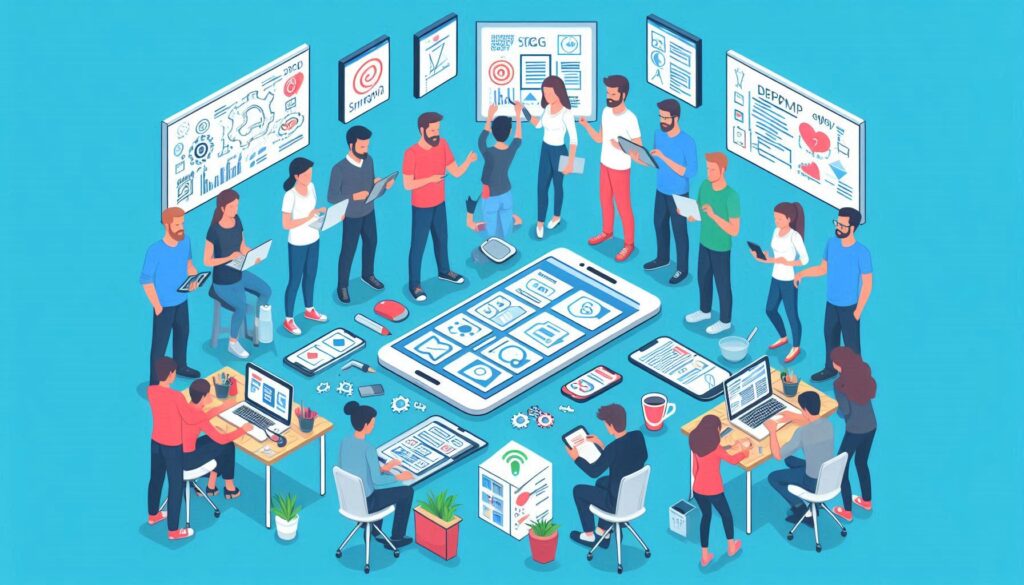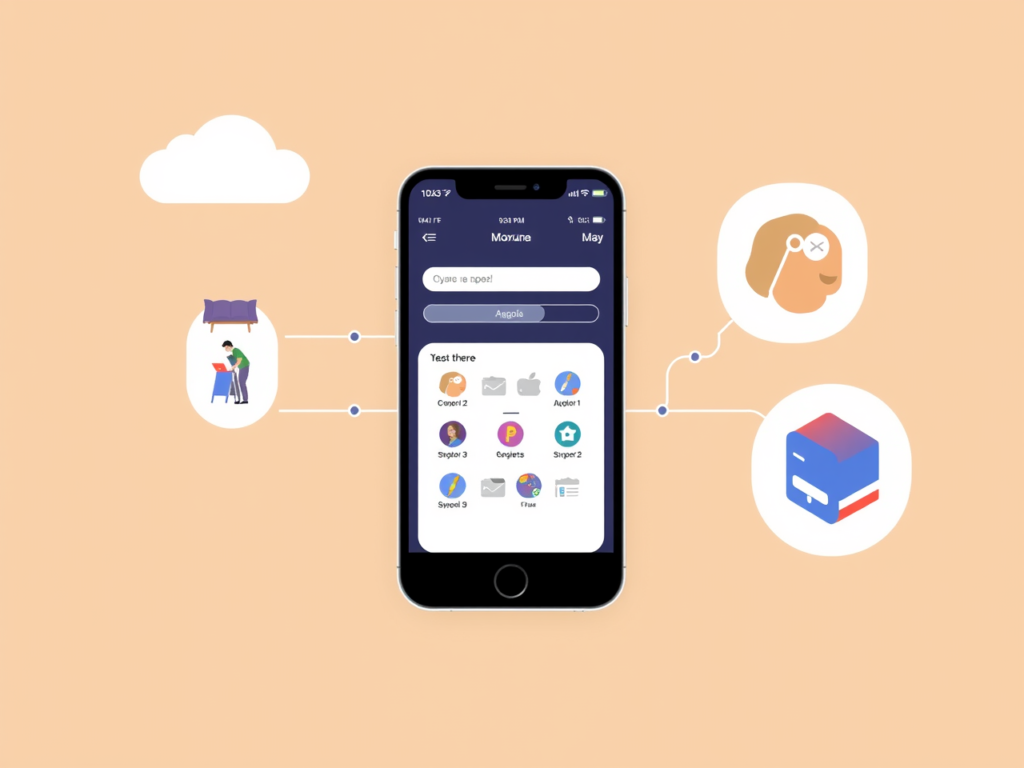Table of contents:
Mobile applications are a necessary tool for individuals and businesses alike. With the high demand for these apps skyrocketing, various companies are embracing the utility of mobile app development for internal purposes or to generate revenue.
Although the extensive processes involved in this development can be tedious, they can also be quite satisfying. This step-by-step guide will walk you through the processes of mobile app creation, whether it is an iOS or an Android app. But first, let’s look at what mobile app development entails.
What is Mobile App Development
Mobile app development involves designing, creating, testing, and launching software apps that run on a mobile device. This mobile app uses remote computing resources and a stable network connection.
Hence, their creation involves implementing backend services and installable software bundles such as codes and binaries. These applications are pre-installed on the device or downloaded from applications like Google Play or the Apple App Store.
You can develop mobile applications with unique tools and languages for either the iOS or Android platforms. An iOS app development company develops apps for Apple iPhone devices, while an Android app development company creates apps for Android devices.
A Step-by-Step Guide to the Process of Mobile App Development
Creating a mobile app involves several critical steps. Here’s a detailed look at each stage of the app development process.
#1 Idea and Conceptualization
The first step to successful mobile app creation starts with a great idea. Begin by identifying the purpose of your app and defining the strategy. For whatever function your app might serve, having a solid understanding of the reasons backing the conceptualization of the idea of the app will help you plan well for what comes next.
All this involves providing answers to critical questions like:
- What problem does it solve?
- Who is your target audience?
- What features will you be integrating into your app?
#2 Planning and Research
This step comprehensively researches competitors’ features and user requirements for adequate and effective planning. Find out more about apps developed by competitors and access their breakthroughs and shortcomings.
This will provide your mobile app development company with the with the necessary insights to help you effectively strategize and integrate the best features and functionalities. For instance, a market survey may show competitors with similar apps.
This valuable insight will help you develop distinct and innovative features that better appeal to your potential users.
#3 Design
To ensure maximum engagement with your app, you should prioritize this next step. The design process requires a lot of attention and effort to create an app that users will enjoy. When making the UI/UX designs, ensure they are simple to use, intuitive, personalizable, and visually appealing.
Work with an experienced Android or iOS app development agency for optimal input to create wireframes and prototypes for your app. An easy-to-navigate, engaging, and user-friendly app enhances the experience and satisfaction of users.
#4 Development
With the design phase completed, this is one of the most critical stages of your mobile app development. At this phase, your app comes to life. This involves developing the front and back ends for a cohesive product.
The backend entails creating codes, databases, and server-side code responsible for how the app functions. The frontend is the face of the app—what users interact with most.
Various app development companies leverage agile methodologies for efficient, flexible, and adaptable coding.
#5 Testing
Conducting rigorous testing on the developed app is essential to determining its quality assurance (QA). Since app development is so competitive, accessing your app’s performance is essential to ensuring it is stable, free of bugs, and secure.
Also, it helps you identify issues with the app for quick and immediate improvements before deployment. Functionality, compatibility, load, security, and usability testing are the basic tests your iOS or Android app development company needs to conduct.
These tests ensure the app functions correctly and provides a seamless user experience.
#6 Deployment
At this point, once your app has passed all the tests, it is ready to launch. Deployment involves distributing your app through different distribution models, depending on the platform on which you developed the app.
This strategy is quite simple. You’ll need to submit your app to either the Google App Store or the Apple Store. Each store you apply to has its own guidelines and review process. Apple has a stricter policy for allowing apps into their store, so getting your app approved by Apple might be difficult.
However, you must comply with the guidelines for these app stores to avoid disapproval.
#7 Marketing and Promotion
The process of Android or iOS app development doesn’t end with deployment. On the contrary, launching your app is just the beginning. You must develop a marketing strategy to acquire users and drive engagement.
Your app is one of a million similar apps in the app store, and canvassing for users makes it easier for you to be spotted by potential users. You can promote your app using marketing strategies such as SEO, email marketing, and paid ads.
Leveraging social media platforms with millions of users like LinkedIn, X, and Facebook can expand your reach to a broader audience. Additionally, creating a website with landing pages that provide detailed information and highlight unique features of your app can drive engagement and downloads.
#8 Maintenance and Updates
Finally, to ensure the continued relevance of your app, regular monitoring and updates are paramount. This is one of the core mobile app development services that helps you stay up-to-date with the latest trends and changes in user needs. Mobile technology is advancing, and staying updated is vital.
Develop new features to maintain user satisfaction and differentiate you from competitors. Regular maintenance can help you solve bugs and keep your app running smoothly.
Your App, Our Expertise
We don’t just build apps. We create digital experiences that wow. North South Tech is about turning your app idea into a reality that exceeds expectations.
Forget the tech mumbo jumbo. We speak your language. Whether you’re a startup dreaming big or a seasoned business looking to level up, we’re here to make it happen.
Ready to make a splash? Let’s talk.




